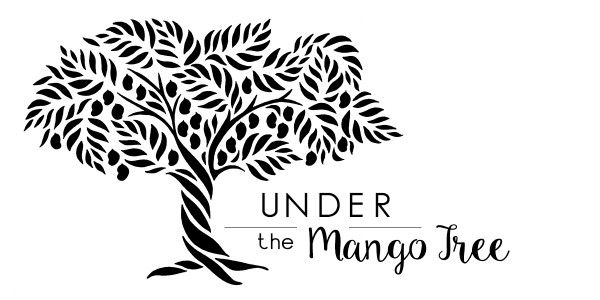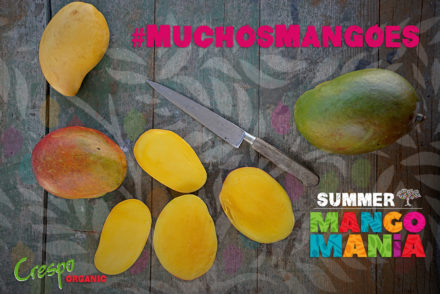Hot & dry Mochis weather yields ripe Keitts, season end is here
Short read: The season is ending abruptly. We are ending on a high note.
One of the most important factors in my “successful” organic mango career is learning to end on a high note. At the personal level, I have maneuvered through various mango networks, regions and growers before setting comfortably in Mexico alongside the Crespo family and El Grupo Crespo. Through this long journey in mangoes (and life) I have learned that good endings, especially in regards to the timing of the ending, in this case of a mango season, is crucial for future, sustainable, long-term success.
The ability to forecast risks, problems and potential losses that every mango season’s end inevitably brings is an invaluable skill. At this juncture of my career, this luckily involves way more experts than me alone. With El Grupo Crespo & the Crespo Organic brand, we have continued to build a process that integrates many likeminded thinkers and visionaries who can hone in on the micro aspects of almost any growing situation or crop scenario. This team can equally and simultaneously keep a bird’s eye view for optimal decision-making in the here and now and for the future success for the program.
Farmers are notorious risk-takers. I have spent over half my life now working with global farmers, and they are the biggest gamblers on the planet by far. It’s exciting to see risk-taking from a farmer’s perspective, but it can also be alarming. One of the most important things a farmer can have on his/her side is people that foresee what they don’t, what they can’t. This is why direct channels of trade are crucial, the information flows much more freely and trust of all parties in the direct line is high. There are many complexities in the risk farmers take, especially in an industry with extremely dwindling profits. The organic sector is in particular is finicky and often difficult to interpret. Despite what marketing tells us, organic market penetration isn’t as booming as you may think. Conventional power and industry often blocks the growth or at minimum tries to control it. (The good news is consumers still push for and want more organics.)
Knowing when to end the season involves an intricate calculation that is never easy and, most often, not well-received by sellers, buyers and even consumers. It’s often not even received well by me. Like the farmers whose job is to produce and produce, my job is to sell and sell. For all of us to stop our natural momentum is a big deal. But this is exactly what we have decided to do; juntos!
In our system we have a number of people on the ground in assessment mode. These folks, mostly farmers, are physically in the orchards daily (which isn’t new) communicating in real time what they are seeing and feeling (this is new). Surrounded by the very mangoes our system will pick, pack, ship and sell, they are the first assessors. Their goal is to move the product off the trees – as much of it as possible. The packhouse jobs are, then, to pack and ship that fruit – again, as much as possible. My job is to sell every single box of mangoes that packhouse ships while ensuring a high level of customer satisfaction. Satisfaction factors include quality, price, size and general competitiveness while simultaneously monitoring customer confidence for organics, the general mango SKU and, of course, our Crespo Organic brand.
When any of the satisfaction factors are off, and they always are in season’s end, a significant amount of market share turns volatile. Problems arise and mostly it turns into a power struggle over minimal, if any, profits. It takes significantly more effort to push and monitor sub quality product through a supply chain system. Minimal returns for said product always equals losses for someone, most often the farmer.
Volatile endings are much more difficult than amicable ones. Think about it in terms of other endings like divorce. As humans, we tend to remember life’s bitter moments much easier than the sweet ones. In our case, customers tend to remember the last weeks of the season and how it ended, not the previous 8 months of fantastic quality, sizing, prices and sales even amidst a pandemic. Not all of us are equipped for good endings or conscious uncoupling, like Goop guru Gwyneth Paltrow would call it.
Ms. Paltrow’s theory is not a bad one. Each season we try and perfect this idea of a good ending, as it pertains to the gran finale of mango season. Basically, we are trying to end the Mexican organic mango season positively, without sacrificing too much of anyone’s hard work in terms of profits and margins. The goal is to start anew next season (in about six months) with good vibes. Trying to explain the on the ground details as much as we can, keeping our customers informed and with us (juntos) in the process.
We are ending the season as we generally do in the last region in the Mexican mango season, the Los Mochis region. To understand the Mochis region well, one must understand how much change has occurred there in a short time. Risk-takers of the area increased production rapidly, aligning with the rapid growth of mango consumption in the USA trying to fill what is/was basically a hole or gap in the year-round supply of mangoes.
The region mostly consists of the Keitt varietal, and it used to be the region that supplied most of the fruit for the dried processing sector, which preferred Keitts. Keitts are big and fiberless so they dry well and since they are usually extremely large from this region, they were/are expensive as a fresh mango. But as mango consumption continued to grow and Americans began to catch onto what the rest of the world already new (mangoes being the most consumed fruit in the world), the need for an extended Mexican mango season for fresh fruit increased. Farmers began to plant more and more orchards while some weather pattern shifts yielding higher temperatures and lower precipitation benefited the area and crops thrived. Organics also spread significantly in the area. Eventually, a fairly potent region was born and a Mexican mango season was extended. In good years, when Ecuador weather cooperated, a 365 day-a-year mango season was born.
Generally, our industry tends to be a little gluttonous, always wanting that 365 availability at all costs. American consumers have come to expect most items to be available to them every single day. That puts a lot of pressure on supply systems which have to weigh the heavy risks of trying to extend a season and a crop that doesn’t want to be extended. There is significant risk and money on the line in the push for 365 availability.
This season, Mexican mangoes seem to be unwilling to extend the season as they have in prior seasons. A lack of rain in the region has sent the trees into survival mode, producing and ripening fruit more quickly. Hot, dry weather makes the fruit mature faster. The rains, if early enough, help quell the maturation. But that didn’t really happen this season. Faster maturing fruit makes it impossible to pack and ship, and, most of all, last through an extensive supply chain and logistic system. The expectation is, as we have already seen it is most everything that is shipped from this point onward will ripen incredibly fast. Keep in mind the flavor is spectacular, so for consumers -eat fast and deliciously.
We expect all organic producers to end the season by this weekend, and we are hearing most conventional packer shippers will also be closing up early for the season. The latest closing packhouse date we are hearing is September 10th.
If we were to continue to push organic fruit through the system, it would be of subpar quality. This is not only unwise for our bottom lines, and these are essential for our long-term future and the success of our brand, program and Mexican growing communities. It could also damage the great work we have done with our brand, proving to consumers that they can have great-tasting, beautiful organic mangoes for an affordable price. We need those consumers to remember us fondly again in February. We need them to remember our last mango season as beautiful and flavor-filled. All things end, and sometimes that’s a very positive thing.















No Comments